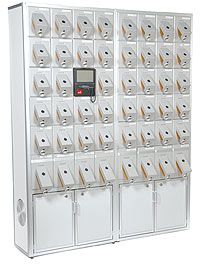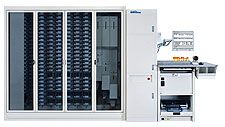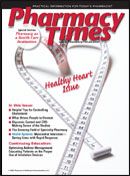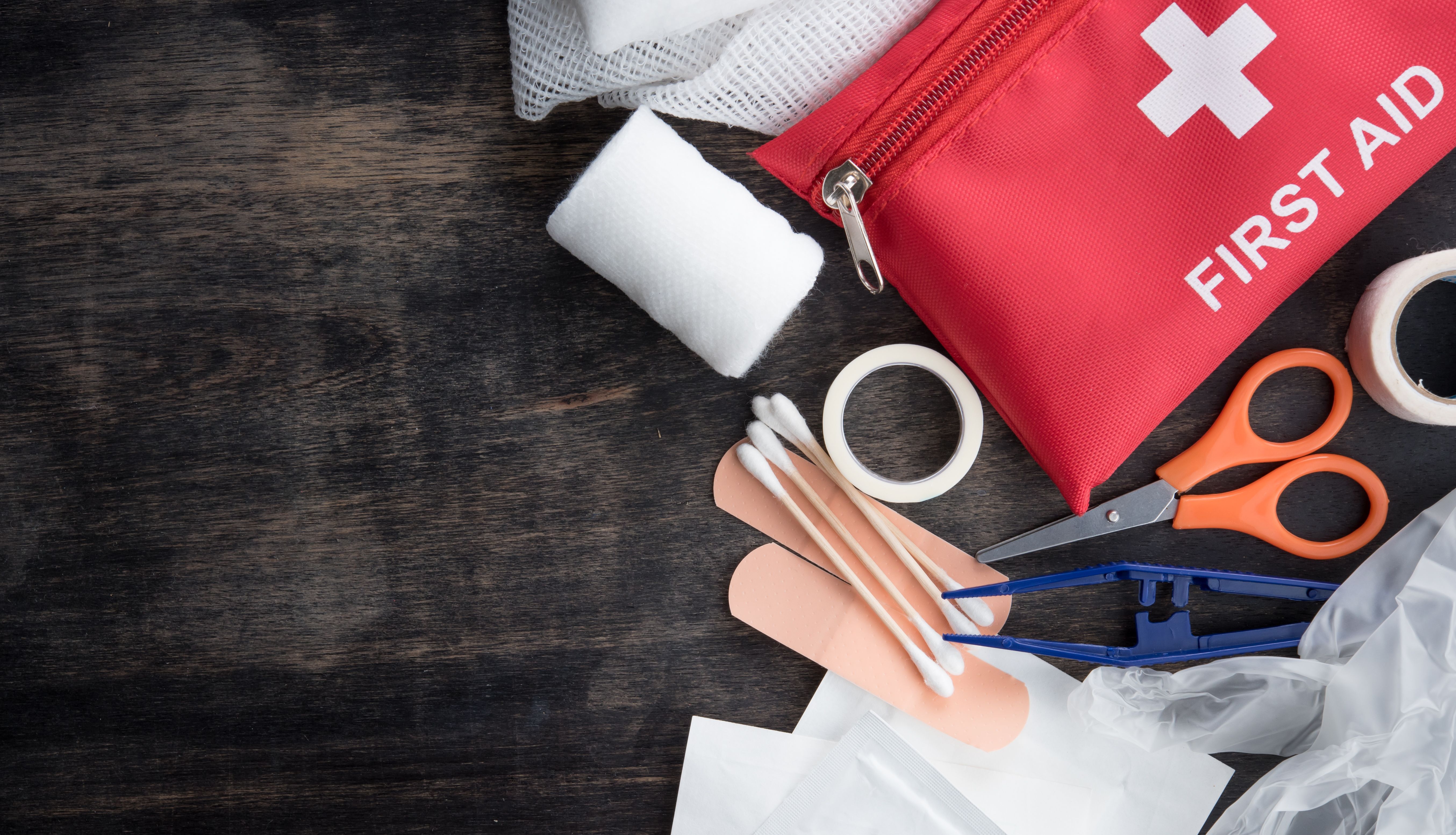Publication
Article
Pharmacy Times
Automation Benefits Pharmacies Large and Small
Author(s):
Pharmacy automation is elevating patient care, allowing pharmacies to improve their efficiencies and allocate more time to patient counseling.
The pharmacy automation marketis expected to make greatstrides in the coming years.Industry requirements and the increasingdemand for accuracy, safety, andcompetency within the pharmacy byhealth care professionals, patients,regulatory bodies, and manufacturersare driving this market.
An analysis of global trends in pharmacyautomation by BCC Researchfound that the global market for pharmacyautomation rose from $2.1 billionin 2006 to $2.3 billion in 2007. Inits March 2008 report, the researchersforecast that the market should reach$3.6 billion by 2012, a compound annualgrowth rate (CAGR) of 9.4%. By 2012,the inpatient pharmacy automationmarket is expected to be worth almost$2.9 billion, a CAGR of 9.9%. The outpatientmarket is poised to continue toexperience moderate growth through2012, with a CAGR of 7.8% over the next5 years.
Whereas pharmacy automation systemsdate back several decades andwere originally intended for high-volumepharmacies, the landscape haschanged, and more offerings are availablefor pharmacies that dispense 100 to>1000 prescriptions a day.
Efficiency, Reliability Is Key for QS/1
Registered Pharmacist Dick Bradley,pharmacy consultant for QS/1, attributesthe increases in prescription volume tothe baby boom patient population takingmore pills. Furthermore, the pharmacistshortage is leaving pharmacies shortstaffed.These 2 components leave room"for potential drug errors as pharmaciesget more and more busy, and this iswhere automation comes in handy."
QS/1, located in Spartanburg, NorthCarolina, offers the QDM dispensingmachine for all types of pharmacies.The QDM, which integrates with thecompany's NRx Pharmacy ManagementSystem, can automate a pharmacy'stop-selling drugs for improved efficiencyand pharmacy productivity. Themachine takes the repetitive manualcounting process out of the equationand frees pharmacists to concentrateon patient counseling and other patientcare services. The machine can countmultiple drugs and precount minimumquantities simultaneously, so they areready for dispensing.

Aside from built-in patient safetyfeatures such as password protection,QDM prevents cross-contamination ofmedicines with a design that uses separatecells and chutes for medication.The machine also tracks lot numbersand expiration dates in conjunction withbar-code scanning and safeguard featuresto prevent dispensing and restockingerrors. For even greater dispensingsafety, the QDM monitor displayspatient, drug, and prescription informationand can display a full-color imageof a drug. The compact modular designallows the QDM to fit into most existingpharmacies. The dispensing machine isavailable in floor models, end-cap models,and counter models.
The cost ranges from $8000 to $50,000depending on the model and the numberof pills dispensed, said Bradley."The machines can be tailored to meetspecific pharmacy needs. A rural store,for example, may not have a need for a$50,000 machine, but an $8000 machinecan help streamline prescription dispensing."
Reliability and operability is paramountfor QS/1. Before QDM was availablefor purchase, it was used at 4 testsite pharmacies built by the company."We didn't sell one for a year becausewe wanted to have all the data and kinksworked out. When the product arrives atthe store, the pharmacy knows it's goingto be reliable."
Kirby Lester Streamlines Workflow
For more than 30 years, Lake Forest,Illinois?based Kirby Lester has stuck toits core business?counting technology."Even with the new technologies, wedon't stray too far from what we're goodat?bringing affordable technology" topharmacies, explained ChristopherThomsen,vice president, business developmentfor the company.
Kirby Lester believes pharmacistinvolvement is crucial when it comes tonew technology. "Our current systemshave been developed with pharmacistsat the regional and independent levels,and we also have an advisory board,"said Thomsen.
The company's KL series for retail pharmacies offers compact countingtechnology that fits each pharmacy'sspecific needs. The newest in the KLsuite of products is the KL20 pharmacycounting and verification system withimportant advances in workflow management,order tracking, and patientmedication safety. The KL20 incorporates1- or 2-way interfacing with pharmacymanagement systems. It featuresall new software, large touch-screen,and user-friendly directions. The pharmacystaff benefits from onsite controlof bar-code setup, simple verificationsteps, and ability to turn workflow softwarefeatures on and off.

The KL15 series is Kirby Lester's basiccounting system, in existence for morethan 3 decades. The KL15e features fast,accurate counting without adjustmentsfor different products. The ergonomicdesign speeds counting at a rate of 15to 18 tablets per second. The KL15ihas the basic counting system of theKL15e plus an integrated bar-code scanner.The bar-code scanning providesaccurate patient prescription label andstock bottle match. The KL system alsoincludes the KL16 and KL25.
Education is another important componentfor successful implementationof technology. Thomsen, who has coauthoredseveral textbooks on pharmacyautomation and technology, travelsaround the world to speak on this topic.
ScriptPro's Robotics Improve Patient Care
ScriptPro does not believe in goingthrough generations of products. Instead,the company is "relentless withmaking their products better. Changingtechnology is painful enough," saidMichael Coughlin, president and chiefexecutive officer for ScriptPro. TheMission, Kansas?based company is ableto maintain its robotic dispensing modelsby taking care of the products sold,improving the models, and expandingits suite of products that work together.ScriptPro upgrades its robots in the fieldas changes are made.

Coughlin said automation continuesto be vital because "it takes a lot ofpotential errors out of the hands of peoplewho can make them. Automationverifies that all prescriptions are for theright person through the use of softwareand bar codes."
ScriptPro's series of robotic dispensingsystems include the SP 200, SP50, SP 100, SPUD, Mini SPUD, SPace,and SPace 200. The SP 200 and SP 50interfaces with the pharmacy computersystems to fill, label, and deliver upto 150 prescriptions per hour. The SPcontains 200 universal dispensing cells,compared with 50 universal dispensingcells in the SP 50.
Both systems use bar codes throughoutthe process for accuracy andquality control; prints and appliesthe prescription and auxiliary labels,and delivers uncapped vials for finalinspection using onscreen drug imageverification; and the pharmacy staffmanages the dispensing process fromprescription entry to approval of thefinished product.
The SPace 200 solution geared towardcommunity and ambulatory pharmaciesis designed for pharmacies that have ahigh volume of prescriptions in a smallfootprint. The system combines the prescriptionfilling, labeling, verification,and dispensing of tablets, capsules, andunit-of-use medications at one workstation.The SPace 200 delivers filledand labeled prescription vials directlyto the pharmacy staff forverification and capping.Unit-of-use medicationsare delivered to the pharmacystaff for automatedlabeling following a barcodescan match. It holds200 of the pharmacy'stop-selling tablets andcapsules and approximately800 unit-of-usemedications.
As for the future of automation,Coughlin said the primary change is"more and more adoption of the technologyand more integration of systems."
Conclusion
Pharmacies will continue to see newopportunities in the automation arena.The advancements and performanceimprovements will allow pharmacies toimprove their efficiencies and allocatemore time to patient counseling.







